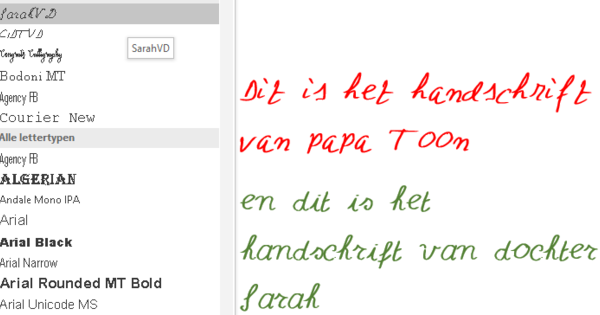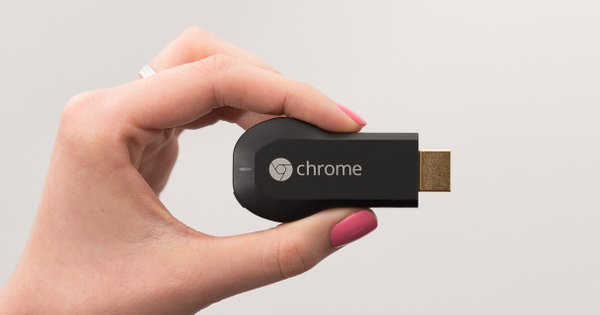You too have probably had to watch them: PowerPoint presentations that consist of endless amounts of boring slides. It is quite a task to keep your attention there. Can't that be nicer? Yes! We introduce you to ten refreshing alternatives to PowerPoint that will make your audiovisual story a lot more sparkling.
Tip 01: Prezi
Don't like the concept of the traditional slide? With Prezi you don't work with a series of slides, but with a large mind map where you zoom in on the different parts. One workspace contains all points of interest, images, PDF files and videos. Also read: How to make professional PowerPoint presentations in 14 steps.
You determine the order of what the viewer sees and you hover, zoom and rotate to each part. Just be careful not to make the Prezi animation too wild – of course you don't want the audience to start showing signs of seasickness. Prezi makes it easy to see the connections between the different parts and shows how each part fits into the bigger picture. There is a free plan, which unfortunately only gives you 100 MB of storage space. In the free version you also need to have an internet connection; the advantage is that you can show the presentation with any device. In addition, there are several paid versions where you can work offline and there is also an educational offer for students and teachers who get 4 GB of storage for free.

Less is more
Some tips to make your presentation more fun:
- Most people use a white, gray or dark blue background. If the organization you work for has a house style, choose a color that is reflected in this style. Place text on it in white or black letters.
- Just about all PowerPoint templates place the title at the top in a block with a block below for the photo or frames. You can safely deviate from that. For example, place the text in the lower left corner.
- Long sentences do not belong on a slide. After all, a good speaker does not need subtitles.
- Be careful with lists and lists. Here and there a slide with bullet points is possible, but use these kinds of slides in moderation.
Haiku Deck has its own image bank from which you can get images.Tip 02: Haiku Deck
One of the most common mistakes in a presentation is that there is way too much text on a slide. You can make that mistake impossible with Haiku Deck. Some call this tool the Instagram for slides. And for good reason: Haiku Deck emphasizes the visual power of images. You can use pictures that you already have on your computer, but you can also browse through the gigantic image bank that Haiku Deck uses. The themes, suggested color schemes and fonts look very fresh. However, you cannot select your own fonts, as these are baked into the themes. Here, too, you store the presentation in the cloud. By the way, in the pro version you can export the result as a PowerPoint file. Haiku Deck also offers both a free account and premium versions and has a great app for iOS.

Tip 03: Google Slides
One PowerPoint alternative that doesn't have a price tag is Google Slides. As far as the working environment is concerned, Microsoft has been well copied. Slides was built from the ground up to let people collaborate on the same presentation. It doesn't matter if you're using Google Slides on macOS, Windows 10, Windows 7, or iOS or Android, it looks the same cross-platform and regardless of your operating system version. Another plus of Slides is its simplicity. Adding tables, images, video, shapes and transitions is child's play. At a time when applications are becoming more versatile but at the same time more complex, Slides is refreshingly user-friendly. When you install the Google Slides app from the Chrome Web Store and make the correct settings in Google Drive, it is possible to edit and display Google Slides slides offline. In addition, there is a Google Slides app for Android and iOS to show the performance on your tablet.
 In SlideDog you make a 'playlist' of all the parts you want to show
In SlideDog you make a 'playlist' of all the parts you want to show Tip 04: SlideDog
SlideDog is also special. Want to combine PowerPoint slides, web pages, video clips, Prezi files, and (a few) PDF documents? SlideDog makes everything appear neatly at the click of a button. You place all the different elements in a kind of playlist, in which you indicate the order of all parts yourself. This also makes SlideDog extremely suitable for collecting presentations from different speakers at a conference. With this tool you can even create presentations where the content changes automatically at certain times and which you automatically start over at the end.
This is useful, for example, at exhibitions and trade fairs. The Live Stream Presentations are also nice, where you let the spectators follow the presentation on their own laptop or tablet via a link. SlideDog only works on Windows and has a free version and a mobile edition. For the advanced features you pay $14.99 per month or $99 per year (approx. 13.50 and 89 euros respectively).

Practical tips
- Don't start with the usual 'title, location and date', but start with a bang. Summarize the core message with a quote, a current event or, better yet, tell an anecdote to get the audience thinking.
- PowerPoint is used by inexperienced presenters as a cheat sheet, with everything they want to say on the screen. Make sure that your audience mainly listens to you and does not have to read along. A story from a good narrator, supported by strong photos, stays with you longer than a slide with ten bullet points.
- Test movies several times. If something goes wrong with a presentation, it is when loading video. For example, you have updated the presentation, but the videos are no longer in the correct folder. A dress rehearsal before you really start is therefore always smart.
- Use the presenter view. In this option, you can already see the next slide, allowing you to create smooth transitions in your story.
- Try to have fun in your presentation. Nothing is more infectious than a presenter who visibly enjoys his own 'show'.
Tip 05: Keynote
The first versions of Apple's Keynote didn't provide a wow feeling, but from Keynote 6.6 all the annoyances have been removed. For example, the taskbars are customizable. The presentation mode, in which the speaker follows the course of slides and his notes, can also be adjusted to the needs of the user. More experienced Mac users can add smart features to their slides using AppleScript. In this way, nice extras such as the current time display, or images are automatically loaded.
We even saw examples of scripts to control Philips Hue lamps from the presentation! Keynote only works on macOS and iOS, and of course you can store the files on iCloud Drive, Apple's online cloud service. The Magic Move transition is impressive. This feature allows you to smoothly move or change appearance of text and images that appear on the same slides. This trick is most similar to the morph effect. Something different than the hackneyed flying letters. In addition, the user has magnetic guides that make the presentation stylish.


